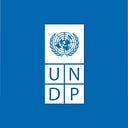It’s not over till it’s over
Bridging the gaps in COVID-19 vaccination.

Vaccinating the world against COVID-19 has been the largest ever public health initiative.
More than 12 billion doses have been administered, and a recent study suggests that in the first year of rollout, starting December 2020, they were responsible for saving 19.8 million lives.
In 2021 the World Health Organization set one of the most ambitious public health goals in history — a 70 percent vaccination rate in every country by mid 2022.

UNDP’s Global Dashboard for Vaccine Equity shows that vaccination has remained largely the preserve of the rich. Even though there are enough vaccines to supply 95 percent of the world’s population, the 70 percent goal has not been met by 27 low-income countries.
And just 15 percent of lower-middle income countries have been able to meet the target.
Altogether more than 1.2 billion people are unprotected, including many of the most vulnerable.


How did we get here?
By Feb of 2021, nearly 60 percent of high-income countries had overcome severe supply bottlenecks, positioning them on a path to vaccines for all. They didn’t look back.
It took until the end of that year for most low-income countries to overcome severe supply constraints.
It was also comparatively cheaper for richer nations to find the money to switch into high gear — a 0.8 percent of their health budgets, compared with a 56.6 percent hike that low income countries would have to find.
Places such as the Democratic Republic of Congo and Yemen continue to face significant obstacles.
Seventy-eight percent of low-income countries had enough vaccines for the short term, but their deliveries were not on track to help them reach WHO’s goal.
And despite vaccines rolling out towards the end of 2021, only about half those that were delivered had been administered.


This has had a marked effect on the most vulnerable. As of 30 June, just four low-income countries have been able to achieve coverage of more than 40 percent for older adults, whereas most rich countries have at least 95 percent coverage for the same age group.
UNDP’s projections show that if low-income countries continue vaccinating at their current rates it would take until April of 2025 for at least half of the countries in this income group to provide primary coverage to 100 percent of older adults, even if the vaccines remained effective against new variants, which cannot be assumed.


Getting to 70 percent
To reach the 70 percent target by the end of the year, vaccination rates in 64 low- and lower-middle income countries would need to at least double, and nine countries would require at least 100 times greater speeds.
Mongolia would need to accelerate its vaccination rate more than 200 times but, as 66 percent of Mongolians have already been fully vaccinated, this is an easier task than for Senegal, where only about one in every 16 people is fully immunized, requiring vaccinating nearly 450,000 people every week.
Countries such as Cameroon and Guinea-Bissau would need to speed up their vaccination rates more than 500 times.
Only one in five lower-middle income countries, including Lao PDR, Nepal, India and the Philippines, are projected to reach 70 percent population coverage by the end of 2022. At this rate it would take until August 2025 for 63 percent of lower-middle income countries to achieve the WHO target.
WHO has recommended that countries prioritize achieving 100 percent coverage with the highest risk groups, including healthcare workers, older adults and those who are immunocompromised, or have underlying conditions.


An evolving virus
While we may want to be done with the virus, it is not done with us. Between June and September this year it caused 1.5 million excess deaths — and more than half of those were in low- and lower-middle-income countries
Even the vaccinated do not have the privilege of ‘moving on’. To do so would not only be immoral, but dangerous.
History shows how damaging dormant outbreaks can be. The second wave of the 1918–1919 influenza epidemic was the deadliest, particularly for many Asians and Africans.
The spread of the Omicron variant showed how important the need to get to 70 percent it. The most vulnerable and marginalized groups must be prioritized in the line for full vaccination.



Equitable vaccine distribution is fundamental to a fair and sustainable global recovery.
The Global Dashboard for Vaccine Equity combines the latest data on the roll-out of COVID-19 vaccines with the most recent socio-economic information to illustrate why accelerating vaccine equity is not only critical to saving lives but also to a faster and fairer pandemic recovery. It provides new insights and possibilities for policy makers to dive into the implications of vaccine inequity for socio-economic recovery, jobs and welfare. Analyses can be generated and compared by country, region and globally, and organized by income group.
The Dashboard is a joint initiative of UNDP, WHO and the University of Oxford, with cooperation across the UN system, and anchored in the SDG 3 Global Action Plan for Healthy Lives and Well-being for All.
